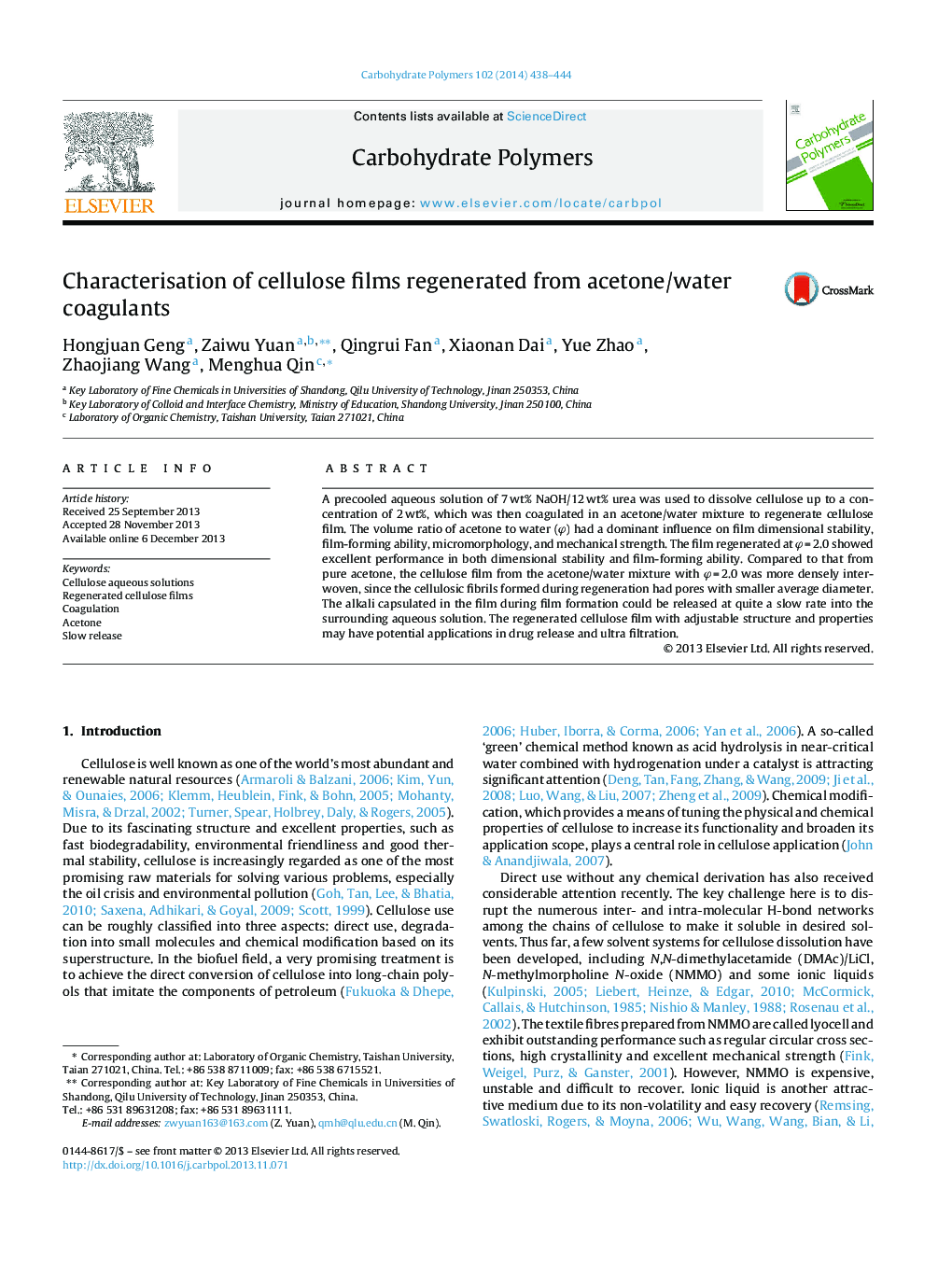| Article ID | Journal | Published Year | Pages | File Type |
|---|---|---|---|---|
| 7792909 | Carbohydrate Polymers | 2014 | 7 Pages |
Abstract
A precooled aqueous solution of 7Â wt% NaOH/12Â wt% urea was used to dissolve cellulose up to a concentration of 2Â wt%, which was then coagulated in an acetone/water mixture to regenerate cellulose film. The volume ratio of acetone to water (Ï) had a dominant influence on film dimensional stability, film-forming ability, micromorphology, and mechanical strength. The film regenerated at ÏÂ =Â 2.0 showed excellent performance in both dimensional stability and film-forming ability. Compared to that from pure acetone, the cellulose film from the acetone/water mixture with ÏÂ =Â 2.0 was more densely interwoven, since the cellulosic fibrils formed during regeneration had pores with smaller average diameter. The alkali capsulated in the film during film formation could be released at quite a slow rate into the surrounding aqueous solution. The regenerated cellulose film with adjustable structure and properties may have potential applications in drug release and ultra filtration.
Keywords
Related Topics
Physical Sciences and Engineering
Chemistry
Organic Chemistry
Authors
Hongjuan Geng, Zaiwu Yuan, Qingrui Fan, Xiaonan Dai, Yue Zhao, Zhaojiang Wang, Menghua Qin,
